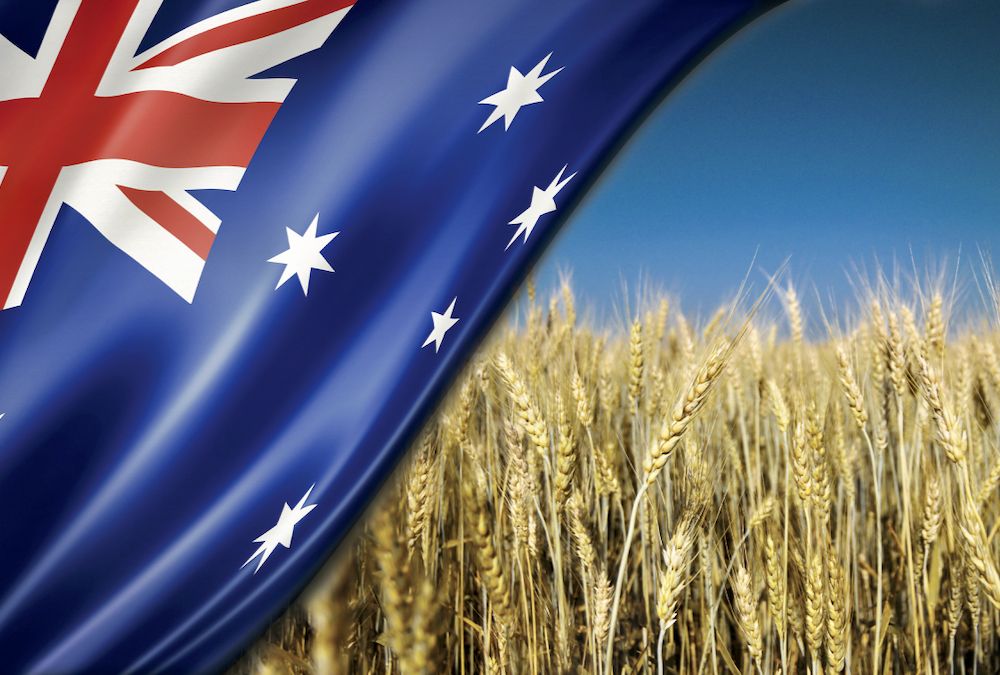Australia: Barley lifts on China demand

Grower sales of wheat and barley have picked up in the southern market this week, while domestic demand in the north has shrunk as buyers wait for forecast rain to depress offer prices.
Traders are confident growers will be pricing more new-crop tonnage to generate near-term cashflow, with barley likely to be the grain they hold if they deem the bids too low.
While wheat has traded sideways to firmer in the past week, barley values have lifted in the south as demand from China encourages traders to accumulate for the bulk market.
| Nov 16 | Nov 9 | |
| Barley Downs | $438 | $435 |
| ASW wheat Downs | $445 | $443 |
| Sorghum Downs | Mar-Apr $430 | $440 |
| Barley Melbourne | $368 | $355 |
| ASW Melbourne | $394 | $394 |
Table 1: Indicative prices in Australian dollars per tonne.
Poultry demand for H2 wheat has picked up for nearby slots, and is absorbing much of the tonnage being offered by growers.
Its premium over ASW and APW wheat has lifted in recent days by around $10/t, and is being booked delivered Downs January at $450/t.
“All of a sudden there’s a bit more interest in that,” one trader said.
ASW and APW-type is dominating deliveries of new-crop wheat as harvest rolls on to the outer slopes of southern New South Wales.
Given the mostly dry growing season which normally translates to high protein, the relatively low proportion of H1 and APH1 grain delivered has come as a surprise.
While domestic flour millers are covered on high-quality new-crop grain, exporters are yet to see the volume they need to start offering higher-protein wheat to the export market.
On mid-protein grades, competition from Black Sea grain has reduced nearby interest in Asian markets including Indonesia and The Philippines.
Northern growers are already looking to plant next year’s wheat to use up nitrogen this year’s crop has left behind because of the lack of in-crop rain, and weighing up their options for planting sorghum or mungbeans, or fallowing over summer.
With more than 50mm of rain forecast to fall in on the upper north-west plains of NSW and nearly all of Queensland’s grain-growing areas by November 25, growers are not keen to book prompt out-turns as storms roll around the region.
“With the amount of rain they’re talking, it’s going to be hard to get anything with grower for the next couple of weeks,” one trader said.
“A lot of people are sitting on their hands and trying to work out what the weather’s going to do.
“People will put a mix of sorghum and mungbeans in if they get enough rain.”
In southern NSW, the canola harvest is going at full pace, with quality mostly good and oil levels generally around 44-45 percent.
While outer slopes and plains wheat often hits H1 and sometimes APH1 specs, Grain Focus principal Michael Jones, Young, said early deliveries were generally of lower protein.
“West of the Newell Highway, a lot is going ASW and APW, plus some H2 and APH2, and the exporters are chasing H2,” Mr Jones said.
As with the north, barley has been showing a greater than normal proportion of malting to feed, again because of lower-than-expected protein.
“Feed barley values have slipped a little bit around here; growers are shutting up shop on feed barley sales at these prices.
He said markets, for canola at $600/t depot or better, and wheat, were showing more attractive prices.
Some sites on the south-west slopes and Riverina are said to be close to full for canola because of a slow start to the new-crop export program.
“Ships aren’t coming for canola, so the trains aren’t taking it to port.”
Wheat and barley are dominating the early exports out of southern Australia, but the canola program is expected to kick into gear in the New Year.
Broun & Co export trader Andy Cunliffe said margins for containerised grain were being squeezed by competition from Black Sea origin.
“That’s keeping a lid on things, and export business for containers is slow.”
Indications are that elevator margins are well down on where they have been in the past year or two as Ukraine finds a way to export grain other than through ports on the Black Sea’s northern shore.
“We’ve moving back to a more normal year, and we’ve got some cheaper origins to compete with.”
“On sorghum too, Australia is way more expensive than other origins.”
Mr Cunliffe said a “mixed bag” of wheat quality was coming in from the early part of the southern harvest.
Ahead of the trade being able to get a handle on the overall quality picture of wheat now being harvested, Australia is expected to be competing largely in the optional-origin wheat market.
Read also
Wheat in Southern Brazil Impacted by Dry Weather and Frosts
Oilseed Industry. Leaders and Strategies in the Times of a Great Change
Black Sea & Danube Region: Oilseed and Vegoil Markets Within Ongoing Transfor...
Serbia. The drought will cause extremely high losses for farmers this year
2023/24 Safrinha Corn in Brazil 91% Harvested
Write to us
Our manager will contact you soon



